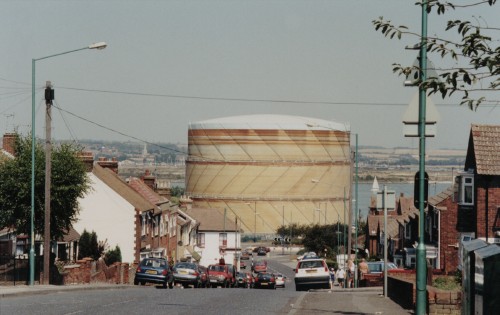
Today when we talk about gas we usually mean the gas which is piped into our houses and which we use for heating and cooking. This is mainly a gas called methane. Methane has no smell so we usually add a harmless smelly substance to it so that we know if we have left a gas tap on or there is a gas leak. Methane comes from gas fields deep under the Earth's surface so it is often called natural gas.
The first gas to be piped around towns was coal gas. Pall Mall, in London, was lit by coal gas in 1807. Coal gas is, as its name implies, made from coal. Coal gas was usually made and stored locally: it was much cheaper to move coal round the country, initially by canal but later by rail, than to lay gas pipelines. During the Victorian era gas works were built in almost every town in Britain. The gas was stored in gas holders, sometimes but incorrectly called gasometers. These were huge steel tanks floating on water, which rose and fell according to the amount of gas in them. Gas holders were a feature of almost every urban landscape until the 1960s. In Britain coal gas was replaced by natural gas during the 1960s although the gas holders built to store coal gas continued to be used to store natural gas for a number of years after this - you can see one every time you watch a televised cricket match at The Oval in London.
Gas Works needed lots of water for cooling so they were often built on or near rivers or the sea - today such places are usually prime development sites.
A gas holder had to have some method of being kept upright as it rose and fell. There were two main types: column and rotary. Here is a picture of a rotary gas holder showing its position on a river in the middle of an urban area - the Gas Works associated with this gas holder has long since been demolished.

Here are close-up pictures of the same gas holder full, partially full and empty, and a detailed picture of the mechanism which causes the holder to rotate as it rises and falls.
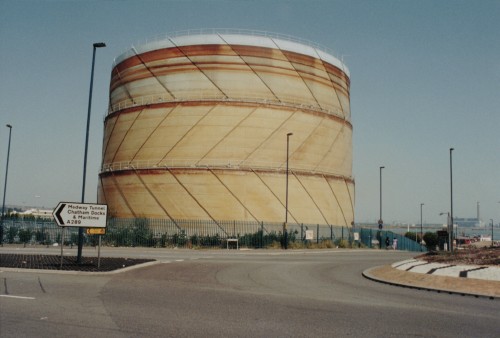

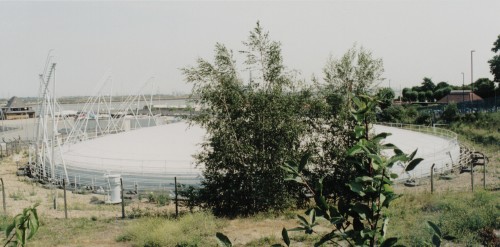

A column gas holder was supported by tall steel columns as it rose and fell; here are photographs of the column gasholder on the same site, and a general view showing both the rotary and column holders.
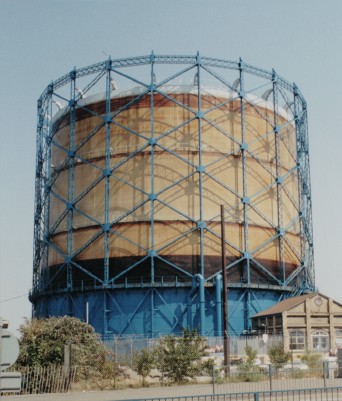
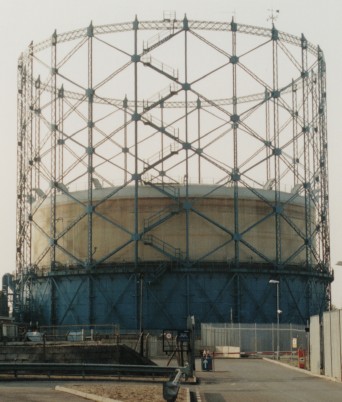
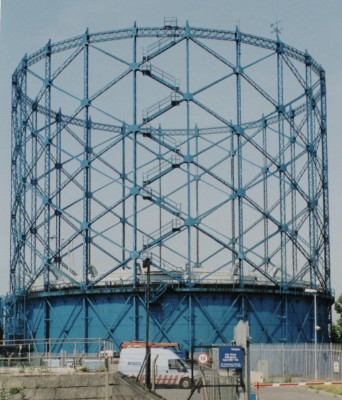
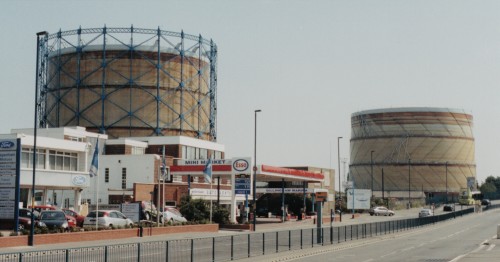
Coal gas is a mixture of several different gases including carbon monoxide. This is very poisonous, and every year many people died of coal gas poisoning. Until the 1960s “putting your head in the gas oven” was a common way of committing suicide, and many films made or set before the 1960s show people being murdered by gas.
Coal gas is lighter than air (so is natural gas) and during the Second World War barrage balloons were filled with coal gas because, whatever the disadvantages, it was always readily available.
In the 1960s, following the discovery of gas fields under the North Sea, coal gas was replaced by natural gas, originally also known in Britain as North Sea Gas. Natural gas is almost pure methane and is not poisonous. At atmospheric pressure methane boils at minus 162oC, and although when it was first introduced it was stored in the gasholders originally built to hold coal gas, today it is usually stored as a liquid at minus 162oC in vast underground chambers, and almost all of the old gasholders are being dismantled.
Within Britain natural gas is usually distributed by pipelines carrying gas, but it can also be distributed, particularly internationally by sea, as LNG (Liquid Natural Gas). LNG tankers can rival petroleum tankers for size.You can read about the history of gas supply by visiting the Gas Museum web site ![]()
© Barry Gray August 2003